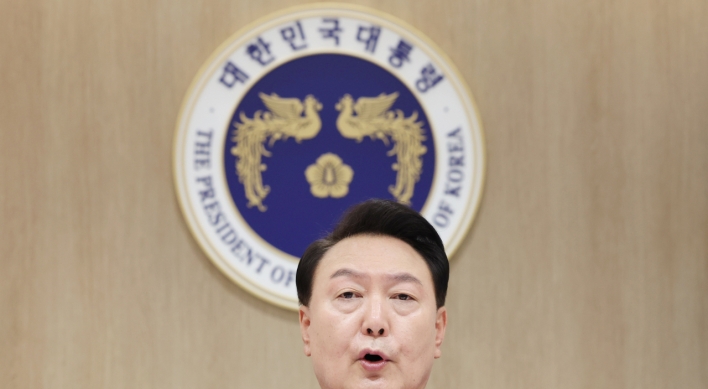A popular stream running through downtown Seoul, which is visited by millions of people annually, has been severely polluted by bacteria, a report by the city government showed Tuesday.
According to the report, submitted to the Seoul council member Jang Hwan-jin of the Democratic Party, parts of the Cheonggyecheon stream contain as many as 53 times the legal limit of colon bacillus. The standard for the number of bacteria for a body of water suitable for swimming is 1,000 per 100 milliliters.
The study checked for water quality from January to September this year at three different locations along the stream, which stretches for 8.4 kilometers under more than a dozen bridges through Seoul.
The water under the Mojeon Bridge upstream had 7,201 bacteria per 100 milliliters, more than seven times the limit. But farther downstream toward the eastern end, water samples contained 53,303 bacteria.
A Seoul official said the stream may have been polluted during the rainy season, when pollutants could have entered Cheonggyecheon through rainwater pipes. The stream was flooded on a few occasions under heavy monsoon rains this summer.
Jang said he wasn't buying that argument.
"There were nine checks for quality this year and samples exceeded the legal limit on three to six occasions, depending on their locations," the councilor said. "The argument for rainwater pollution isn't very convincing. There should be an all-out review of the water quality management for the Cheonggyecheon."
Seoul says up to 17 million people visit the stream each year.
Once covered with asphalt for decades, Cheonggyecheon transformed into a popular recreation spot following a US$900 million restoration project, initiated by then Seoul Mayor and current President Lee Myung-bak in 2003. (Yonhap News)
<한글 기사>
청계천 대장균 `우글우글' 기준치 53배 초과
한해 1천700만여명의 시민이 방문하는 청계천이 대장균으로 심각하게 오염된 것으로 나타났다.
서울시의회 장환진 의원(민주당)이 서울시로부터 건네받은 `청계천 대장균군 기준치 초과 현황' 자료에 따르면 올해 1∼9월 모전교, 무학교, 중랑천합류부의 수질을 측정한 결과 3곳 모두 평균 총대장균 개체수가 2급수 기준치(100㎖당 1천마리)를 넘었다.
총대장균이란 사람이나 동물의 장에서 기생하는 대장균이나 대장균과 유사한 성 질의 균을 총칭하는 말이다.
장소별로 보면 상류 쪽인 모전교에서 100㎖당 7천201마리의 총대장균이 검출돼 기준치의 7배를 초과했으며 중류 지점인 무학교에서는 기준치의 24배인 2만4천360마리의 총대장균이 검출됐다.
수질은 하류로 갈수록 악화돼 중랑천합류부의 총대장균은 기준치의 53배인 5만3 천303마리에 달했다. 이곳에서는 동물의 배설물을 통해 배출되는 분원성대장균도 5천710마리가 검출돼 기준치(100㎖당 200마리)를 훌쩍 넘었다.
지난 8월에는 중랑천합류부에서 사상 최고치인 28만 마리의 총대장균이 검출되기도 했다.
대장균이 있다는 것은 다른 병원성 세균도 자랄 여지가 있다는 것을 나타내는 것이어서 총대장균 개체수는 BOD(생물학적 산소요구량), COD(화학적 산소요구량) 등 과 함께 수질 오염 정도를 알려주는 지표로 쓰인다.
서울시 관계자는 "비가 올 때 청계천으로 직접 연결된 우수관로 등으로 오염물질이 유입돼 순간적으로 대장균 기준치를 넘은 것으로 보인다"고 설명했다.
그러나 장 의원은 "올해 9차례 수질 검사를 했는데 지점에 따라 3∼6차례나 기준치를 초과했다"면서 "강우로 수치가 일시적으로 높아진 것이라는 분석은 설득력이 떨어진다. 청계천 수질관리 시스템을 전면 재검토해야 한다"고 말했다.












![[KH Explains] How should Korea adjust its trade defenses against Chinese EVs?](http://res.heraldm.com/phpwas/restmb_idxmake.php?idx=644&simg=/content/image/2024/04/15/20240415050562_0.jpg&u=20240415144419)






